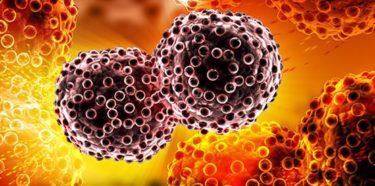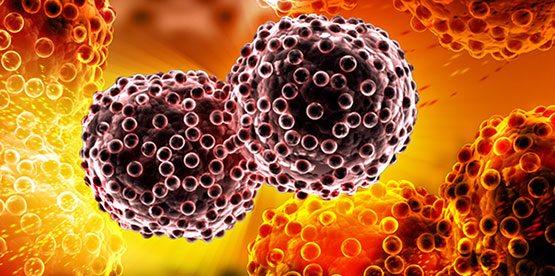Tumor is the abnormal growth of tissues as a result of excessive division of cells in the body. When old or damaged cells die, new and healthy cells replace them. Tumor tissue is formed if cell balance is impaired. Tumors of very different sizes can be in the form of large masses or small nodules. It is classified as benign and malignant tumors. Their types may vary depending on gender or age groups. Tumor symptoms may vary depending on the type and organ in which it develops. Malignant tumors cause different types of cancer depending on the organ in which they develop. For example, lung tumors can cause shortness of breath and cough. Since malignant tumors can be fatal, they should be treated with chemotherapy, radiotherapy and surgery.
Table of Contents
What is tumor?
A tumor is defined as swelling or diseased expansion of the cell as a result of its overgrowth and excessive division. However, not all tumors are cancerous (malignant). It is benign when the cells forming the tumors are normal. If the cells are abnormal and grow uncontrolled, they are malignant cancer cells.
Diagnostic methods such as x-ray, computed tomography (CT) and magnetic resonance (MR) are used to determine the exact location and extent of tumors. To pin down whether the tumor is malignant, a cell sample is taken by biopsy and analyzed by a pathologist under microscope.
Causes of tumor
Our genes that make up our DNA regulate cell growth and division. Damaged or redundant cells die to make room for healthy ones. Tumors are caused by damage and mutations in genes that control the growth of cells in cell DNA.
As a result, some cells form malignant tumors that can damage tissues by proliferating rapidly. Other mutations produce less aggressive, non-cancerous, slow-growing benign tumors. Benign tumors usually do not invade nearby organs and tissues, but rather push normal tissue to the side.
Symptoms of tumor
- Fever or chills
- Fatigue
- Loss of appetite
- Night sweats
- Weight loss
- Pain
Symptoms depend on the type and location of the tumor. For example, lung tumors can cause cough, shortness of breath, and chest pain. Colon tumors can cause weight loss, diarrhea, constipation, iron deficiency anemia and blood in the stool. Some tumors may be asymptomatic. For example, pancreatic tumor does not give any sign until the disease is advanced.

Types of tumor
- Benign tumors: They are not cancerous and do not spread. They remain as they are and do not reappear after removal.
- Malignant tumors: They are cancerous, and they can grow and spread
- Premalignant tumors: They are not yet cancerous, but they develop cancer characteristics.
What is solid tumor?
Solid tumors are usually abnormal tissue masses that do not contain cysts or fluid areas. They can be benign or malignant. Although these tumors occur all over the body, they are mostly seen in the chest, liver and armpits. Solid tumors are named according to the type of cells that make them up. Sarcoma, carcinoma and lymphoma are examples of solid tumors. Leukemia usually does not produce solid tumors.
Benign tumors
Benign tumors grow slowly and limit themselves. They are not cancerous. They usually remain in the tissue in which they are formed, they do not spread to other parts of the body through blood or lymph vessels, they can push the adjacent organs and do not regenerate after removal. Most benign tumors are not harmful to human health.
However, even if they are not cancerous, some may put pressure on nerves or vessels and cause pain. Adenomas, lipomas, fibromas are examples of benign tumors.
Symptoms of benign tumors
- Chills
- Discomfort or pain
- Fatigue
- Fever
- Loss of appetite
- Weight loss
- Night sweats
Malignant tumors
Malignant tumor means that cancer cells are formed and can invade nearby tissues. Some cancer cells can spread to other tissues in the body. It can move to the bloodstream or lymph nodes. This is called metastasis. Cancer can occur anywhere in the body.
For example, breast cancer starts in breast tissue and may spread to the lymph nodes under the armpit if it is not diagnosed and treated early. After breast cancer has spread to the lymph nodes, cancer cells can spread to other parts of the body, such as the liver or bones. Most cancer-related deaths are due to this spreading ability. Carcinoma, sarcoma, germ cell tumors are examples of malignant tumors.
Symptoms of malignant tumors
- Pain
- Weight loss
- Loss of appetite
- Night sweats
- Fatigue
- Fever or chills
What is malignant hyperthermia?
Malignant hyperthermia is a very rare complication of general anesthesia. It is a potentially fatal reaction to drugs or muscle relaxants used during anesthesia. Sudden and uncontrolled increase in body temperature, rapid heart rate, bruising, muscle stiffness, signs of breakdown of muscle fibers can be seen during surgery.
It causes high levels of acid and potassium in blood and other tissues. It can be fatal if not immediately intervened. The most reliable method for diagnosis is muscle biopsy and halothane-caffeine contracture test.
What is malignant melanoma (skin cancer)?
Melanoma is a type of skin cancer that occurs when pigment-producing cells mutate and become cancerous. It is rare in dark-skinned people. Chest and back region are the most common in men, legs in women. Symptoms such as the formation of new moles or changes in color and growth in existing moles may occur. Surgery is the most common treatment option for melanoma.
Differences of benign and malignant tumors
| Benign tumors | Malignant tumors |
| Cells do not spread | Cells can spread |
| Most grow slowly | They grow fast |
| They do not invade nearby tissue | Usually invade nearby healthy tissue |
| They do not metastasize to other parts of the body | It can spread to the nearby tissue through blood circulation or lymphatic system |
| They do not release hormones or other substances | Can secrete substances that cause fatigue and weight loss |
| They do not require treatment unless they are health-threatening | It may require aggressive drug treatments, including radiation, chemotherapy and immunotherapy. |
| They do not relapse after removal or chemotherapy. | Once removed, they may occasionally repeat in a region other than the one from which they originated. |
| Under microscope, the shapes, chromosomes and DNA of the cells appear normal. | Under microscope, the shapes, chromosomes, and DNA of the cells appear abnormal. |
Treatment of tumor
Treatment of benign tumors
Some tumors never need treatment. If the tumor is small and does not show any symptoms, the doctor may recommend a follow-up approach. If the doctor decides for a treatment, the specific treatment depends on location of tumor.
For example, if there is a tumor on the face or neck, it can be removed for cosmetic reasons. Other tumors that affect organs, nerves or blood vessels are surgically removed to prevent further problems.
Treatment of malignant tumors
- Surgery
- Chemotherapy
- Radiotherapy
- Immunotherapy
- Targeted cancer treatment
Tumor surgery
In surgery, one of the main treatment methods of cancer, cancerous tissue is removed from the body. It can be performed under local or general anesthesia. Surgery, a regional treatment method, treats only one part of the body. Therefore, it can only cure cancer that has not spread and is completely present in a single area. The surgeon removes the tumor and some normal tissues (also known as the clean border) around the cancer.
He/she can also remove the lymph nodes that are nearest to the cancer if they contain cancerous cells. Tumor treatment is usually performed using endoscopic techniques. Endoscopic method is performed with fewer incisions, and recovery time is faster.
Chemotherapy
Chemotherapy means medication. It is used to treat cancer depending on the type and stage of the cancer, to prevent its spread, to slow down the growth of the tumor, and to destroy cancer cells that have spread to different parts of the body.
Preventive chemotherapy may also be used to shrink the tumor before surgery or to prevent it from spreading after surgery. Drugs are administered intravenously or as pills taken orally, and spread throughout the body through blood. Side effects may include nausea, vomiting, and hair loss.
Radiotherapy
Radiotherapy (Radiation Therapy) is a treatment that uses high dose radiation to kill cancer cells and shrink tumors. It wipes them away by destroying the DNAs of the cancer cells in the treatment area.
Even though normal cells are affected by radiation, they repair themselves better than cancer cells. Radiotherapy is usually given daily from Monday to Friday, and at the weekend the patient is given a rest to allow normal cells to repair themselves. The aim is to reduce the cancer with fewer side effects or to maximize the chances of treatment.
Causes of brain tumor
The cause of most brain tumors is unknown. However, there is a number of risk factors that may increase the development of brain tumors.
Risk factors of brain tumor
- Age: Some brain tumors are more common in children.
- Previous cancers: Children with cancer have a higher risk of developing brain tumors at later ages. There is a high risk in adults with non-Hodgkin’s lymphoma
- Radiation: Treatment methods such as radiotherapy or X-ray treatment of the head may increase the risk of brain tumors.
- Family history and genetic conditions: Some genetic diseases, such as Turner syndrome, are known to increase the risk of brain tumors.
- HIV (AIDS): People with AIDS have a higher risk of developing brain tumors compared to others.
Symptoms of brain tumor
- Unusual and gradually increased headache
- Unexplained nausea and vomiting
- Blurred and double vision
- Loss of movement in one arm or leg
- Difficulty in balance
- Difficulty in speaking
- Personality and behavior changes
- Hearing problems
- Seizures
What does a solid lesion mean?
Solid lesions are abnormal tissue masses without cysts or fluid areas. They can be benign or malignant. Solid tumors are named according to the cell type that forms them, such as sarcoma or carcinoma. The type and characteristics of the tumor must be identified beforehand to prepare the treatment plan.
What is sarcoma?
These tumors begin in connective tissue such as cartilage, bone, adipose tissue and nerves. They occur in cells other than bone marrow. Symptoms may not be obvious. Pain may occur depending on the location of the tumor or compressing the nerves nearby. Surgery, radiotherapy and chemotherapy are preferred for treatment.
What does the mass mean?
The mass can be defined as swelling or lump, which is not normally found in the body. Not every swelling in the body is a tumor. After an accident or trauma, there may be subcutaneous hemorrhage, which we call hematoma. Although they create swelling in that area, they pass over time. Swelling, such as an abscess due to inflammation, can be completely healed by treatment.
What’s a lesion?
Organ and tissue changes in the body caused by certain diseases are called lesions. Lesions can sometimes occur as rupture, wear, and tissue disorders, as well as tumors and abscesses. Some lesions are benign, others are malignant. To determine this, it should be checked whether the tissue which has the lesion has lost its functionality, or the defects occurring in this tissue should be followed.




